We spent two nights in Dushanbe, the capital of Tajikistan, walking the streets and sightseeing.
The city of Dushanbe has a unique atmosphere with its Soviet-era architecture and monuments. Unfortunately, some of the most Soviet-era buildings have been demolished, but others have survived.
In this post, we share the architectural design highlights of the kitschy, Sovietic Dushanbe.
- Dushanbe, capital of Tajikistan
- Ayni Opera House
- National Museum of Antiquities of Tajikistan
- Monument of Ismoil Somoni
- Rudaki Park
- Palace of the Nation
- National Library of Tajikistan
- Flag Pole Park
- National Museum of Tajikistan
- Navruz Palace
- Barbad Hall
- Writers’ Union Building
- Rohat Teahouse
- Lohuti Drama Theatre
- Mehrgon Market
- Accommodation in Dushanbe
Dushanbe, capital of Tajikistan
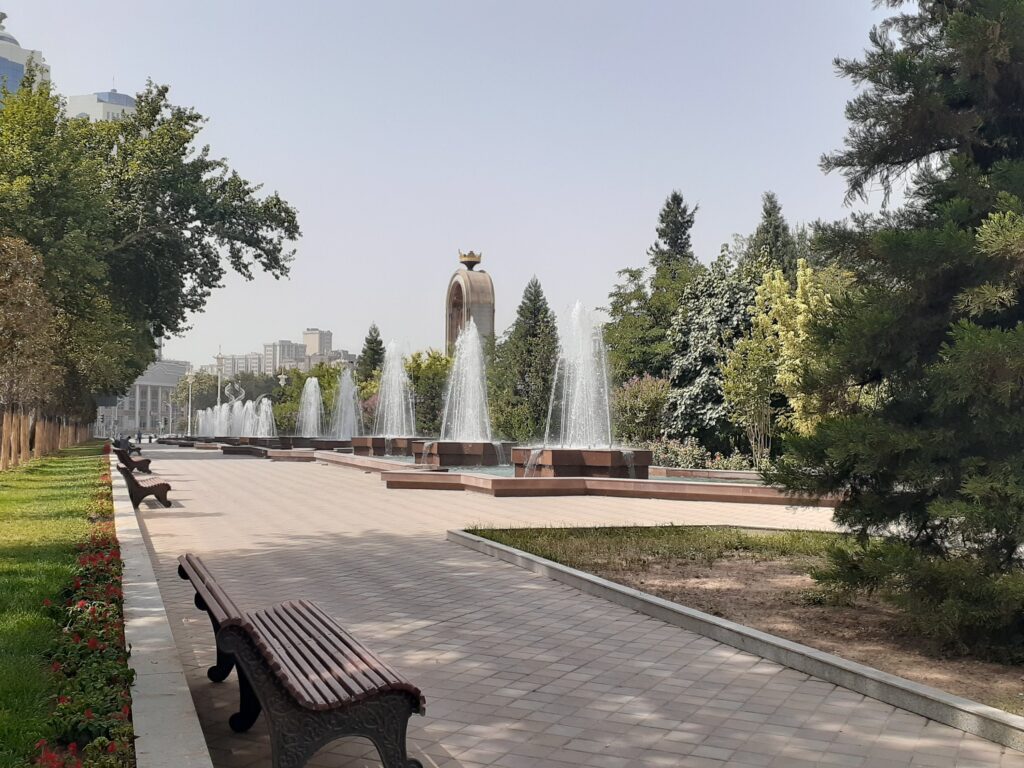
Dushanbe is the capital city of Tajikistan. The population is approximately 1.2 million (2022).
There seemed to be a construction boom everywhere and there were many high-rise buildings under construction. However, walking around the city, there is no sense of being crowded or densely populated, and to be honest, there is a feeling that more buildings are being constructed than is really necessary.
On the other hand, there are many parks and green spaces, probably thanks to the Soviet-era urban planning. However, the monuments and other structures are often over the top.
Such bad taste is one of the interesting aspects of this city. Here are some of the Sovietsque and kitsch architectural forms we found walking around Dushanbe.
Ayni Opera House
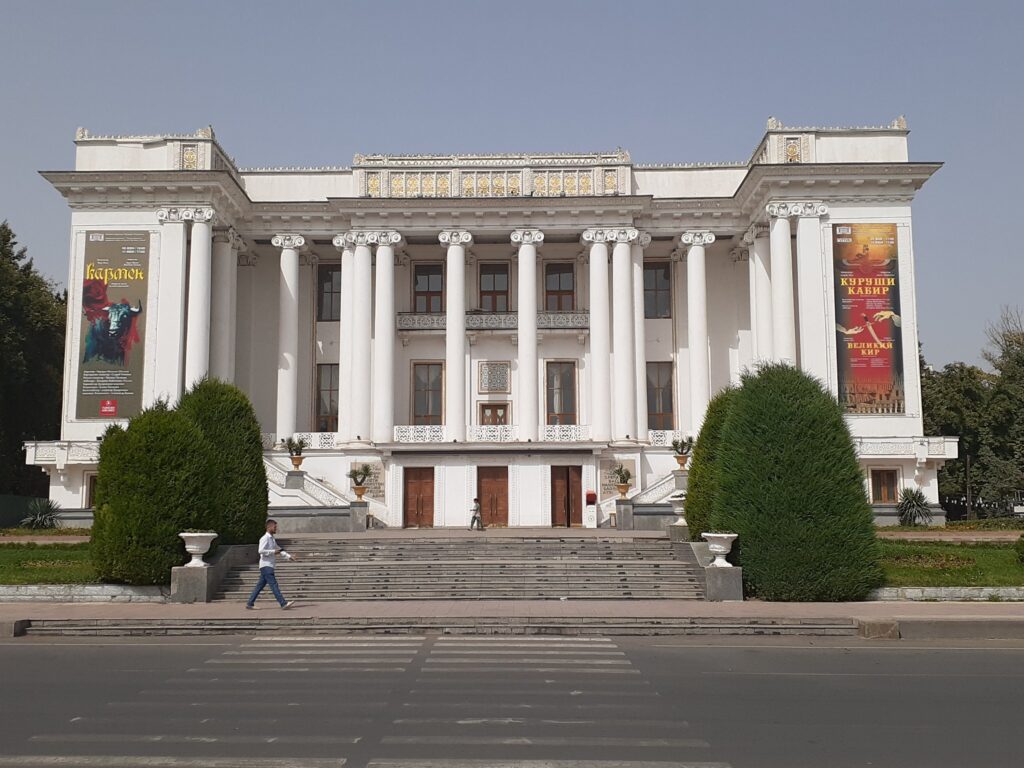
This ballet theatre was built in 1946. It is named after the famous Tajik poet. The first ballet in Tajikistan was performed here.
The façade with its tall white columns is glamorous and imposing. Many plays are still performed in this theatre. The theatre faces west, so the best time to take photos is in the afternoon.
National Museum of Antiquities of Tajikistan
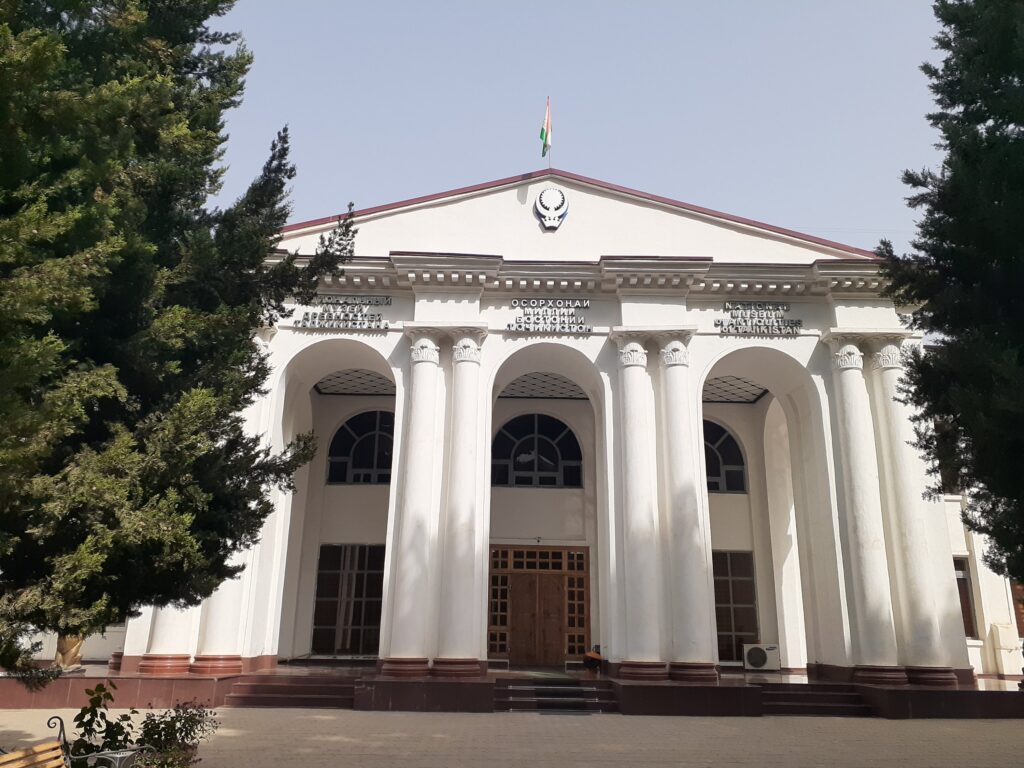
It’s evidenced that mankind has been settled in Tajikistan since at least the 5th century BC, and the National Museum of Antiquities displays artefacts excavated in the country.

The museum houses ancient wall paintings and the largest Buddha statue in Central Asia, dating from the Kushan period (around AD 500). For foreigners, the entrance fee is 50 somoni per person.
Monument of Ismoil Somoni
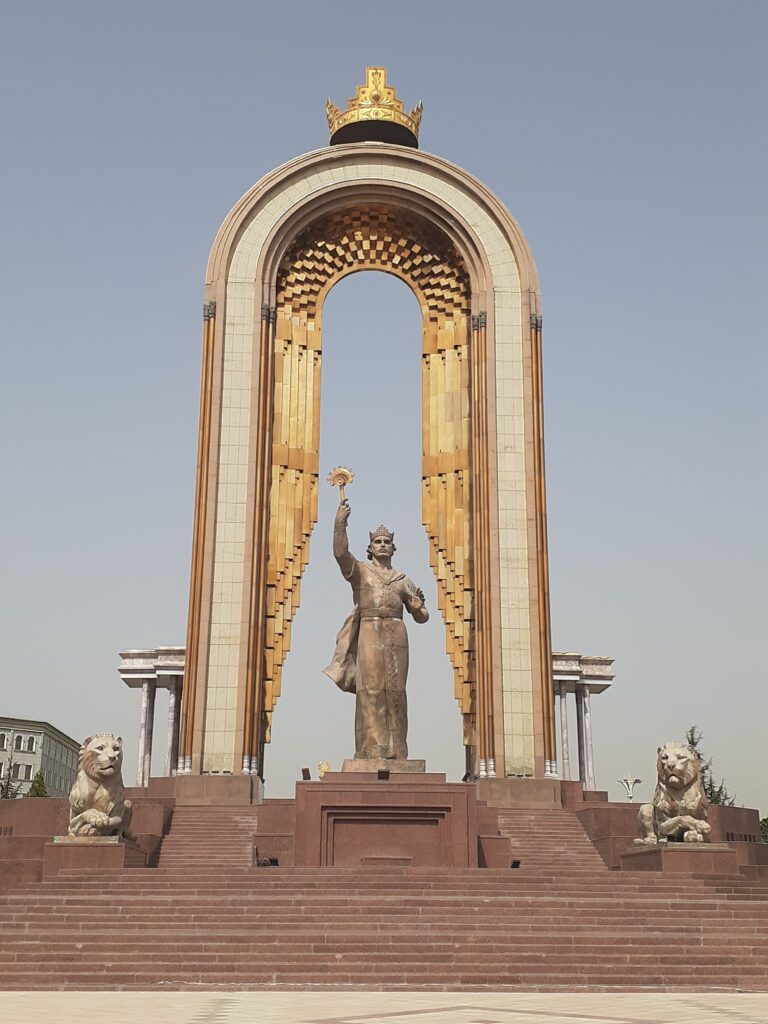
Kitschy monument on the south side of the park. The statue, accompanied by lions on both sides, was erected in 1999 to commemorate the centenary of the Somoni State (819-999). Ismoil Somoni was a national hero who lived from 849-907 and is best known for spreading Sunni Islam.
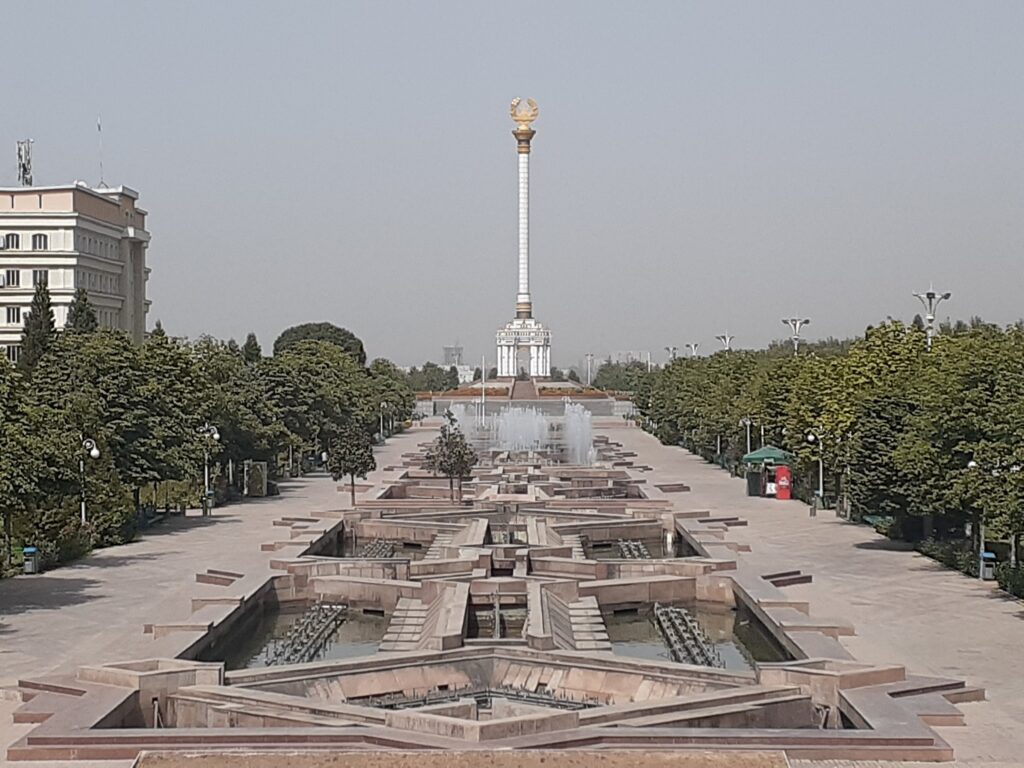
Behind it is the fountain promenade, Dusti Square, which can be viewed from the steps.
Rudaki Park
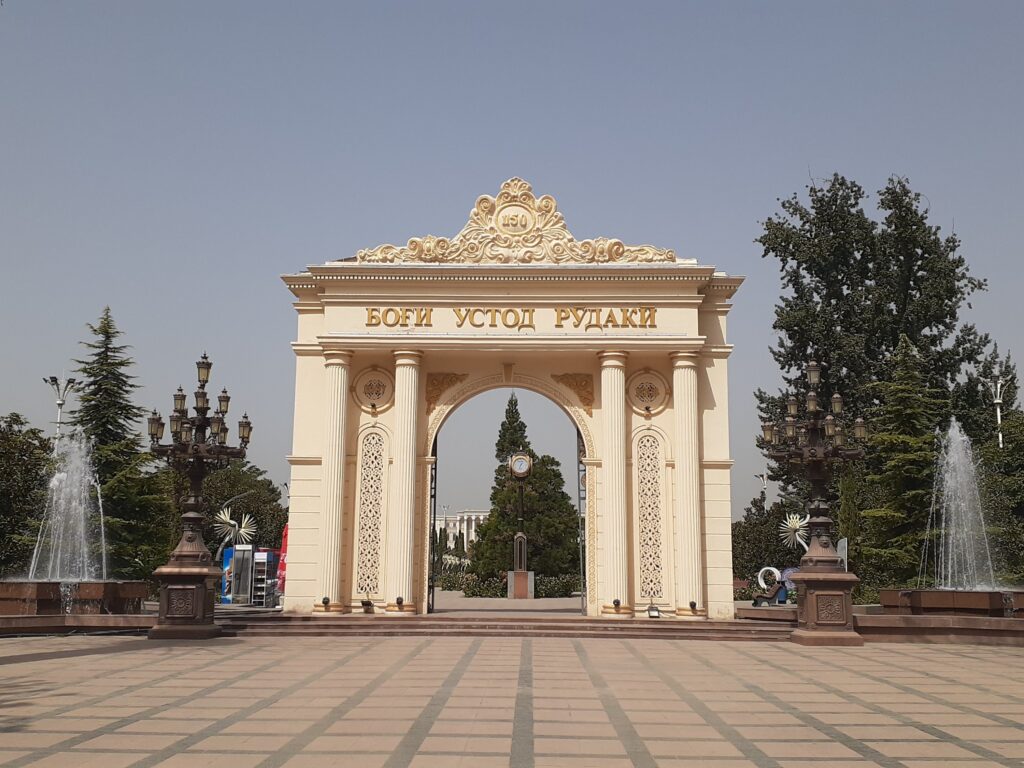
This park was created in the 1930s on Rudaki Street, the main street in Dushanbe. To the south is the Ismoil Somoni Monument and to the west is the Tajikistan Palace.
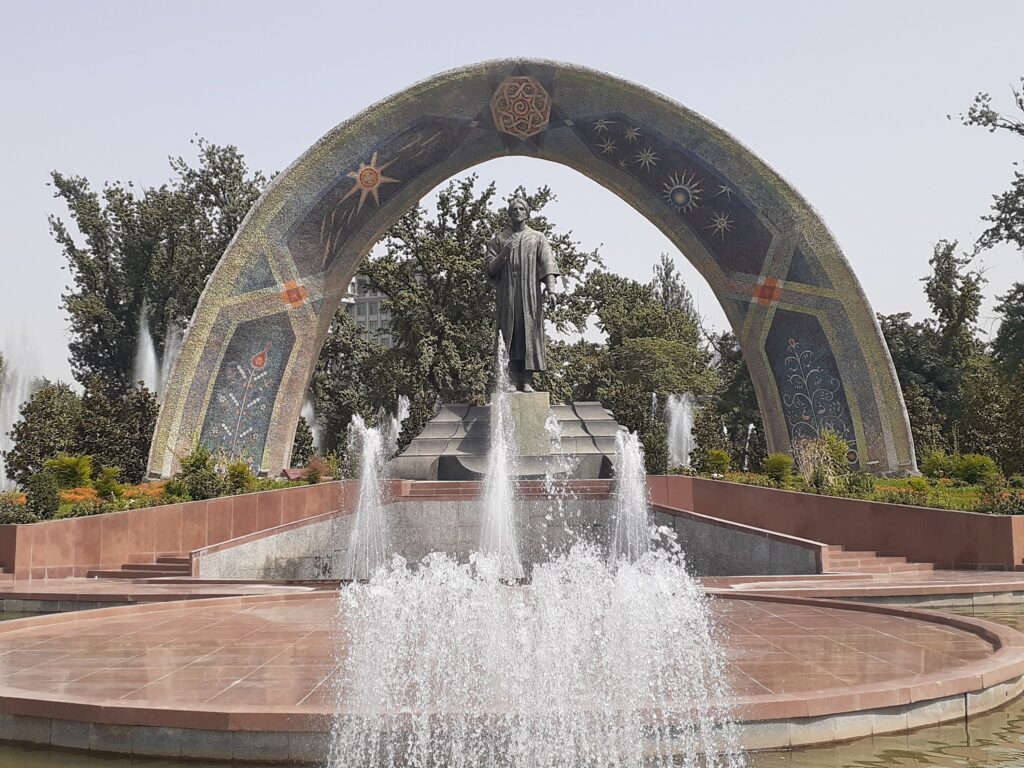
The Rudaki statue is in the centre and accents the park composition. The dome behind the statue is a beautiful mosaic made of tiles.
Palace of the Nation
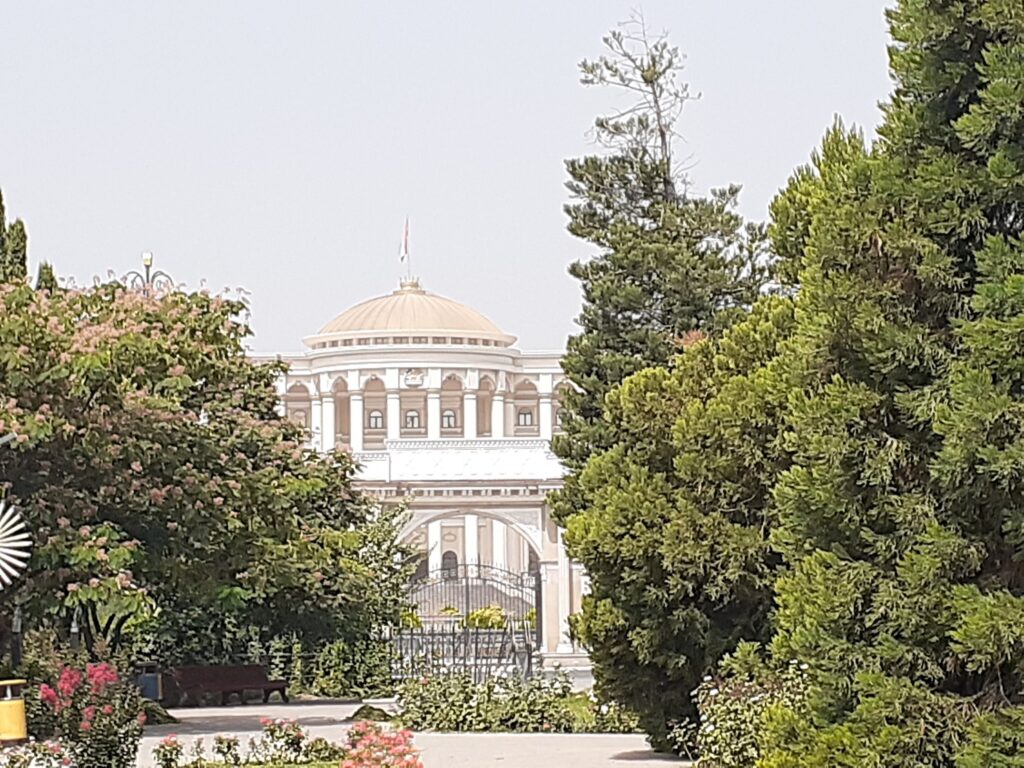
This is the official residence of the President of the Republic of Tajikistan and is sometimes referred to as the White House of Tajikistan. The golden dome of the palace can be seen clearly from the centre of the park.
National Library of Tajikistan
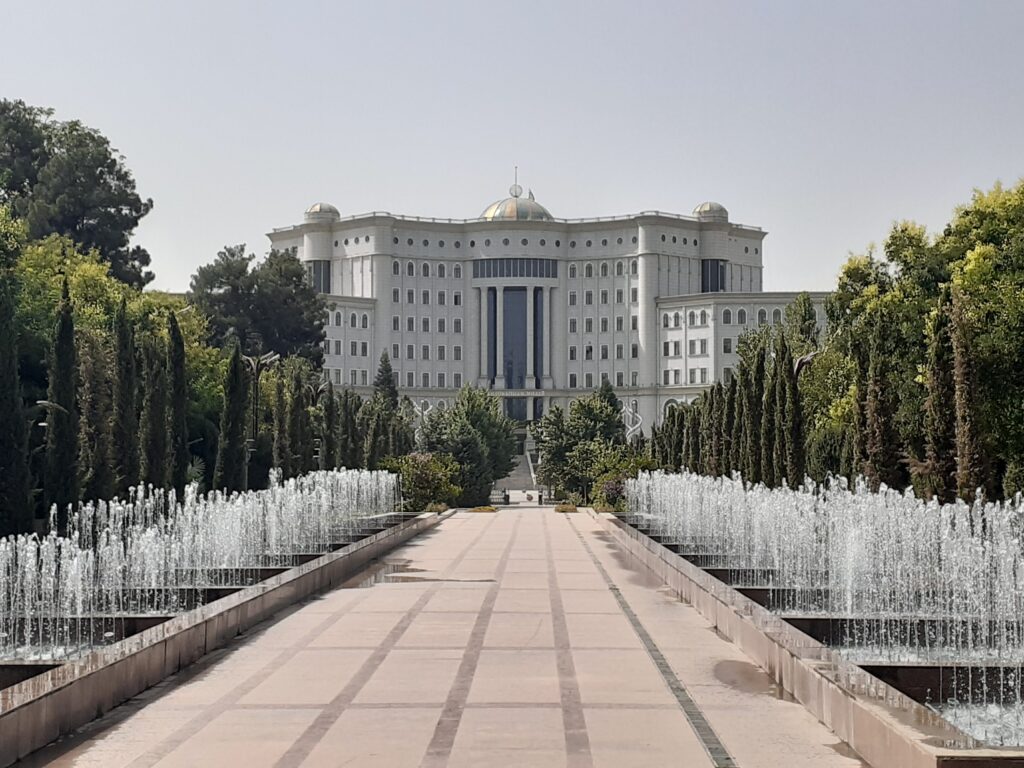
Located to the south of Rudaki Park and visible from the centre of the park, the new building, built in 2012, is a nine-storey building with a total area of 45,000 square metres, the largest in Central Asia. It has 25 reading rooms, three exhibition halls and also serves as an electronic library.
Flag Pole Park
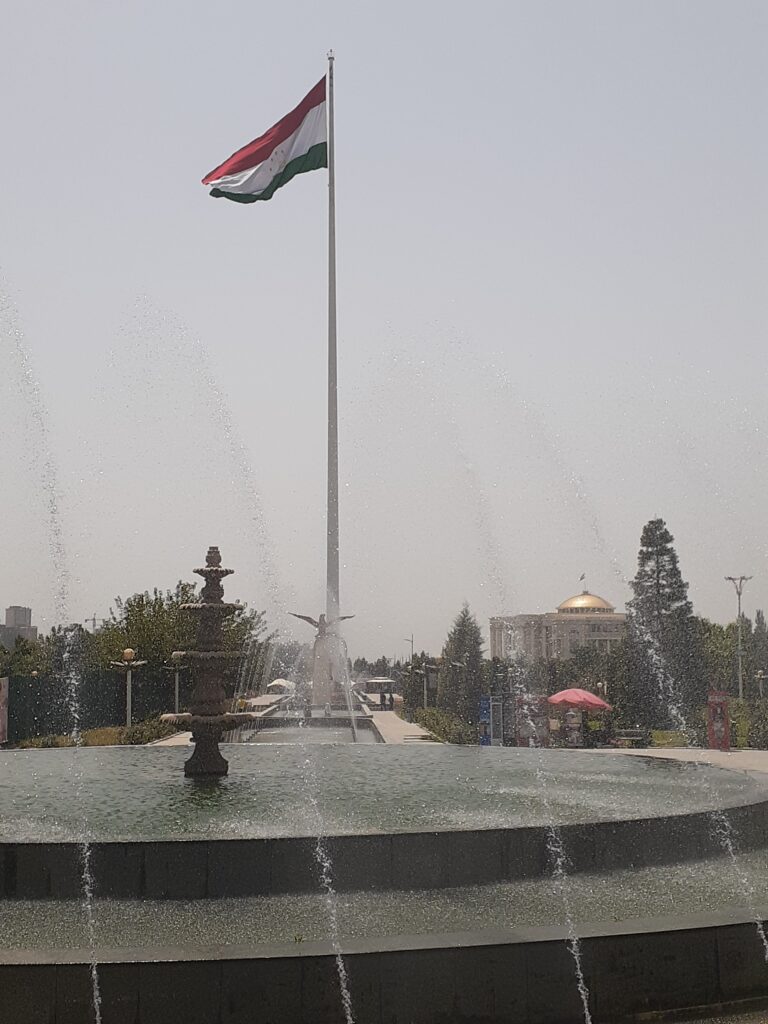
Flag Pole Park is located to the north of the Palace of Tajikistan. It was built to commemorate the 20th anniversary of the founding of the country. The flagpole at its centre is 165 metres high and was the tallest flagpole in the world until it was toppled by the flagpole in Jeddah, Saudi Arabia, in September 2014.
There is a fountain pond at the foot of the flagpole, and kitschy statues and monuments have been erected in the square leading from the front of the National Museum.
National Museum of Tajikistan
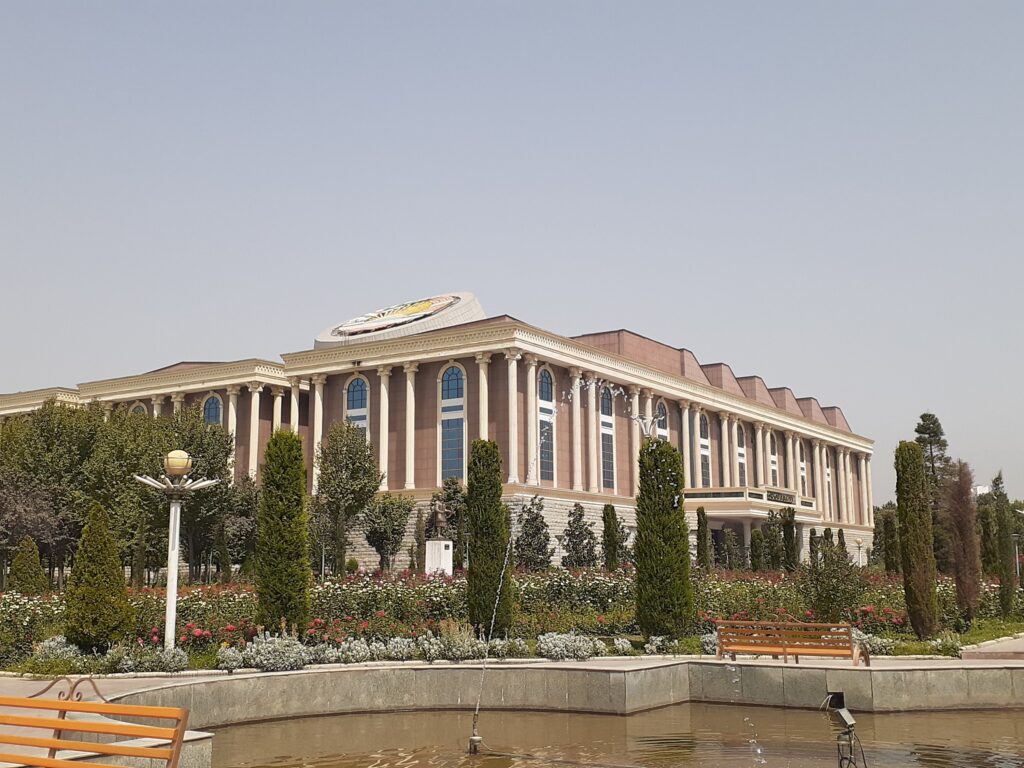
Located north-west of Flagpole Park, the National Museum of Tajikistan has a distinctive roof shape. A new building opened in March 2013 and it has 22 exhibition halls of various sizes, covering more than 15,000 square metres of exhibition space. Admission is 35 somoni per foreigner. The rose garden leading from the park is beautiful.
Navruz Palace
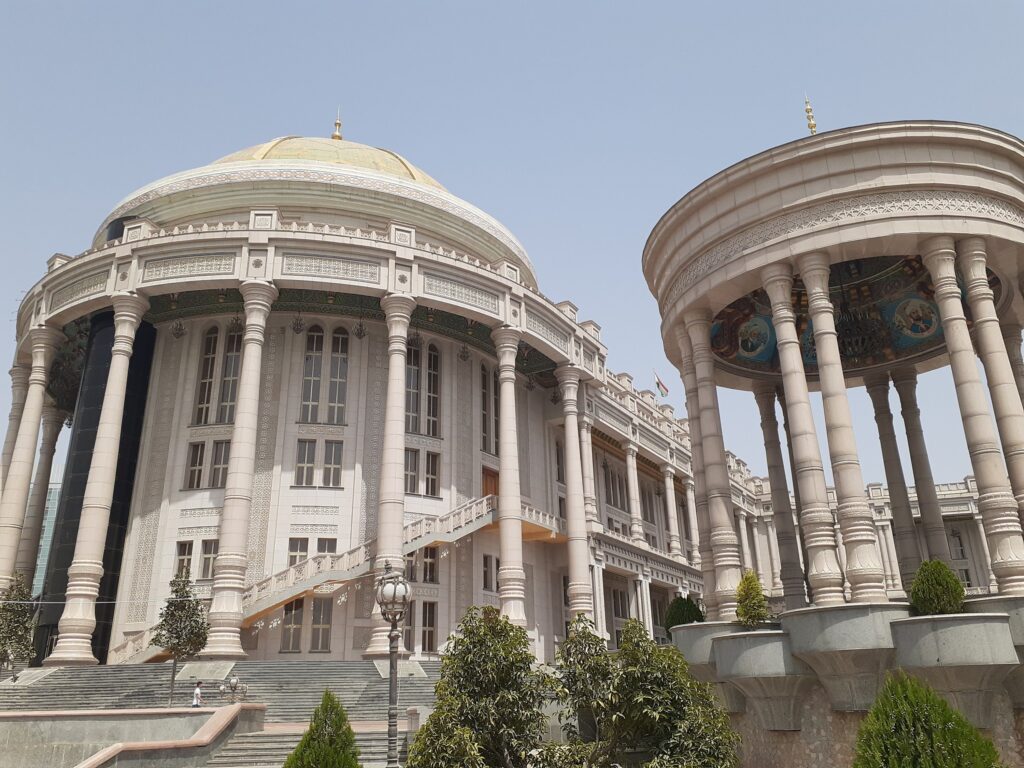
The Navruz Palace was originally planned to be a tea house, and was completed in 2015. Now, it’s a facility complex which includes a museum, a restaurant, VIP rooms, etc.
“Navruz” means New Year, which falls on the vernal equinox (March 21). The beach to the south of the palace was full of people bathing and sunbathing. We didn’t feel like swimming, though, as there was plastic and rubbish floating around.
Barbad Hall
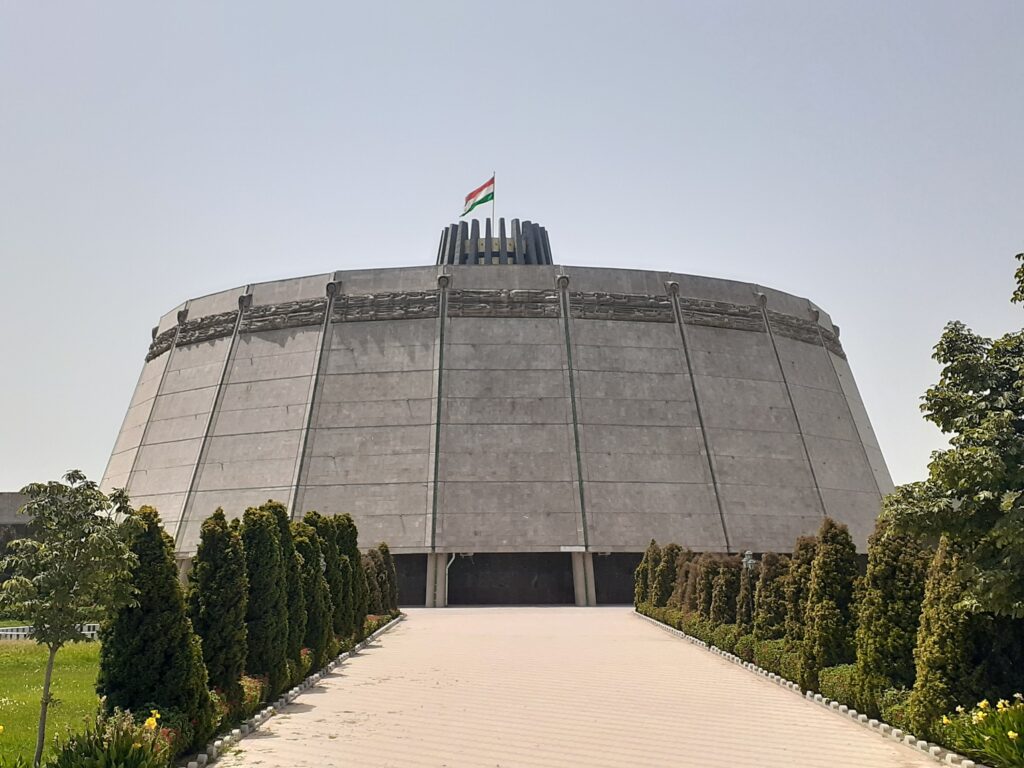
This is a huge pudding-shaped concert hall made of concrete. It is a bizarre form representative of Soviet architecture, but is still used for concerts and as an exhibition space.
Writers’ Union Building

Built in the 1980s, this building is a typical example of modern Soviet architecture. It has a wall with 11 life-size statues of famous Tajik writers embedded in it.
Rohat Teahouse
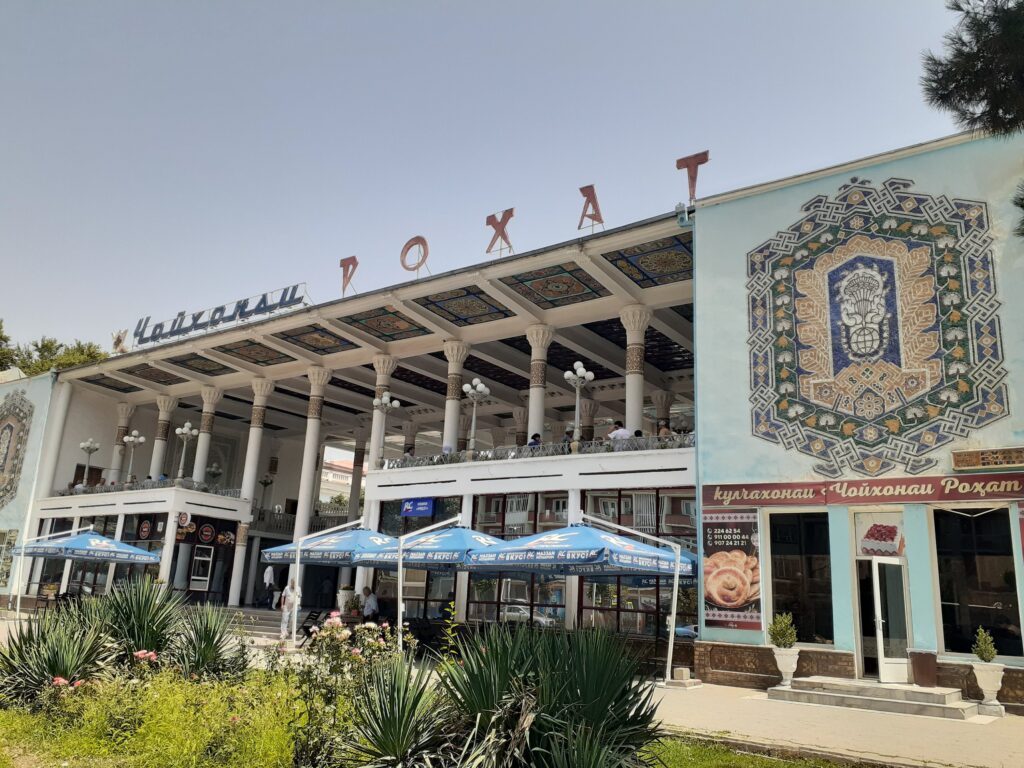
Built in 1958, this is one of the oldest surviving teahouses in Tajikistan. This boxy Soviet building was threatened with demolition in 2015, but public opposition allowed it to survive. It has a colourful ceiling decoration and beautiful mosaics with Persian decorative motifs on both sides.
It was listed as one of CNN’s Top 11 Tea Houses in the World in 2017. Today, it is still a social space in Dushanbe, attracting a large number of guests.
Lohuti Drama Theatre
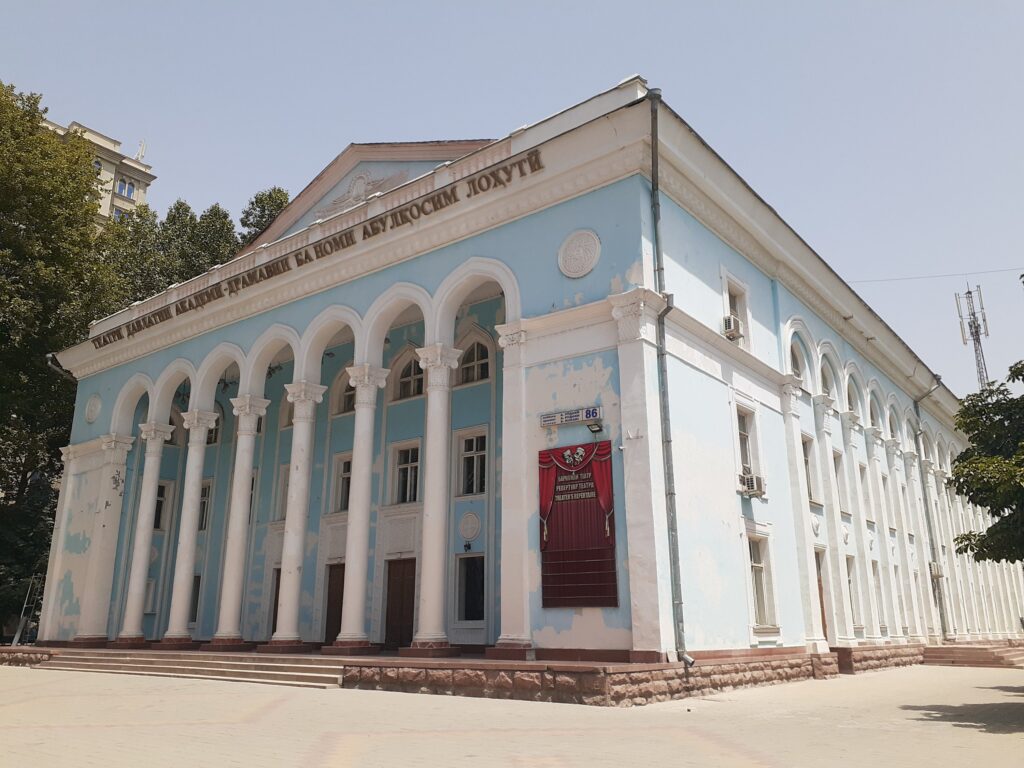
A cinema next to the tea house. The paint is falling off and in need of repainting, but the building is imposing and eye-catching.
Mehrgon Market
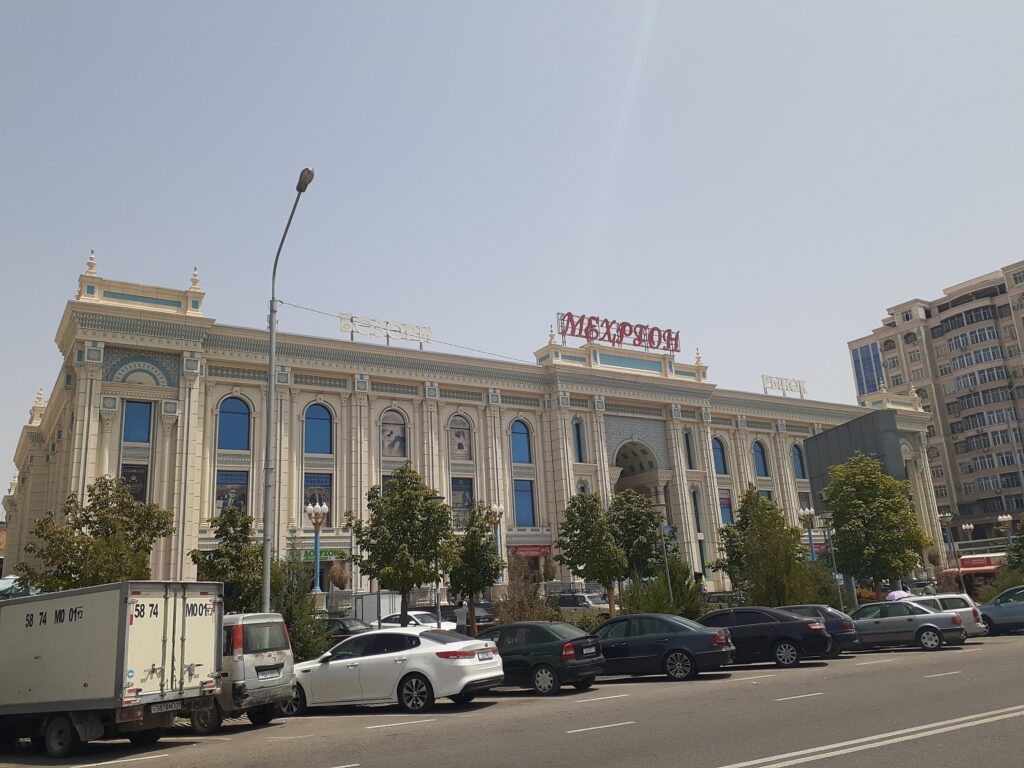
This new food market opened for business in September 2014. It covers a total area of about 30,000 square metres. It is a clean, modern market, but prices are said to be a little high. There was also a row of outdoor shops.
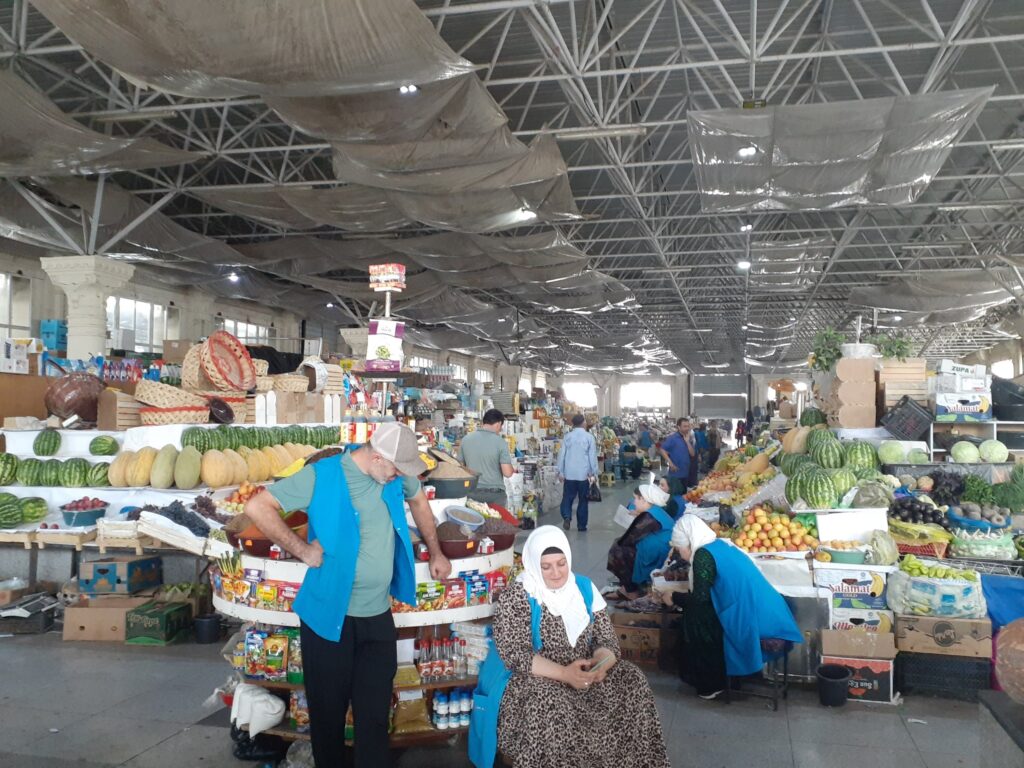
We also bought vegetables and fruit from the outdoor shops. Compared to the supermarkets in town, the goods looked much better but not cheaper necessarily.
Accommodation in Dushanbe
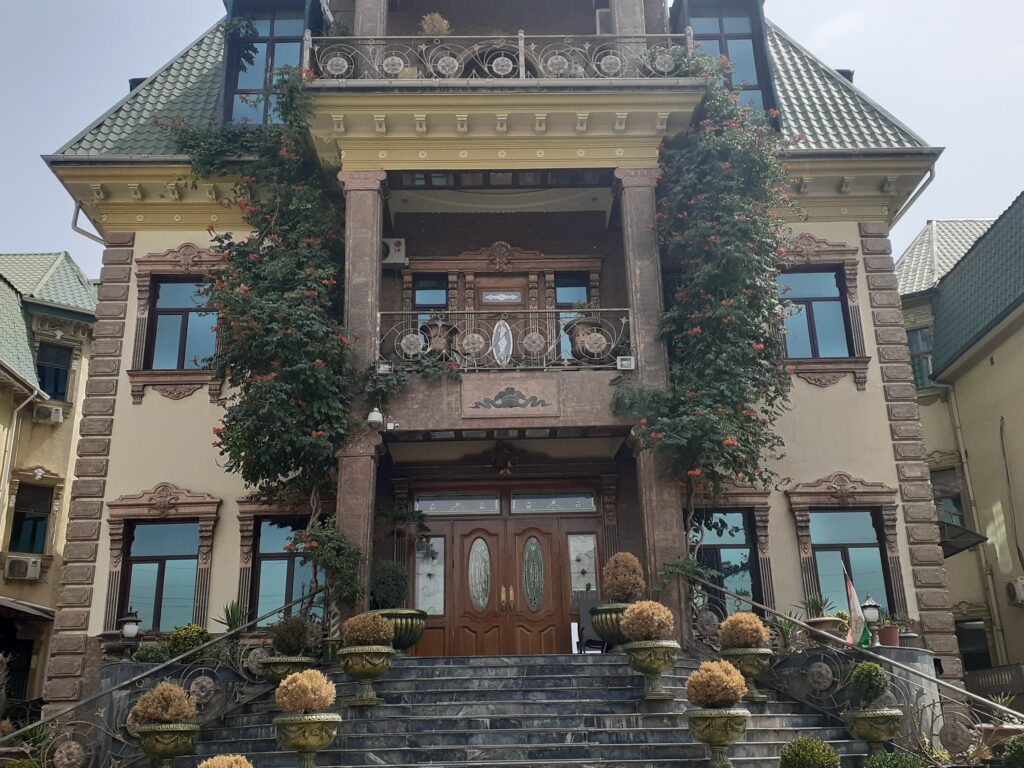
In this article, I have picked up some of the kitsch buildings we saw in Dushanbe, but perhaps the most kitsch of all was our accommodation.
In Dushanbe, we stayed at the Almos Hotel. We booked online for USD 30 per night and it was a mini-suite room with a small room. It seemed that we were upgraded, somehow. It is very reasonable as it is spacious, clean and breakfast is included.
However, as soon as we arrived, we were overwhelmed by the enormous gate that looked like a gate of mansion, and a bit nervous about the over-decoration in the building until we entered the room.
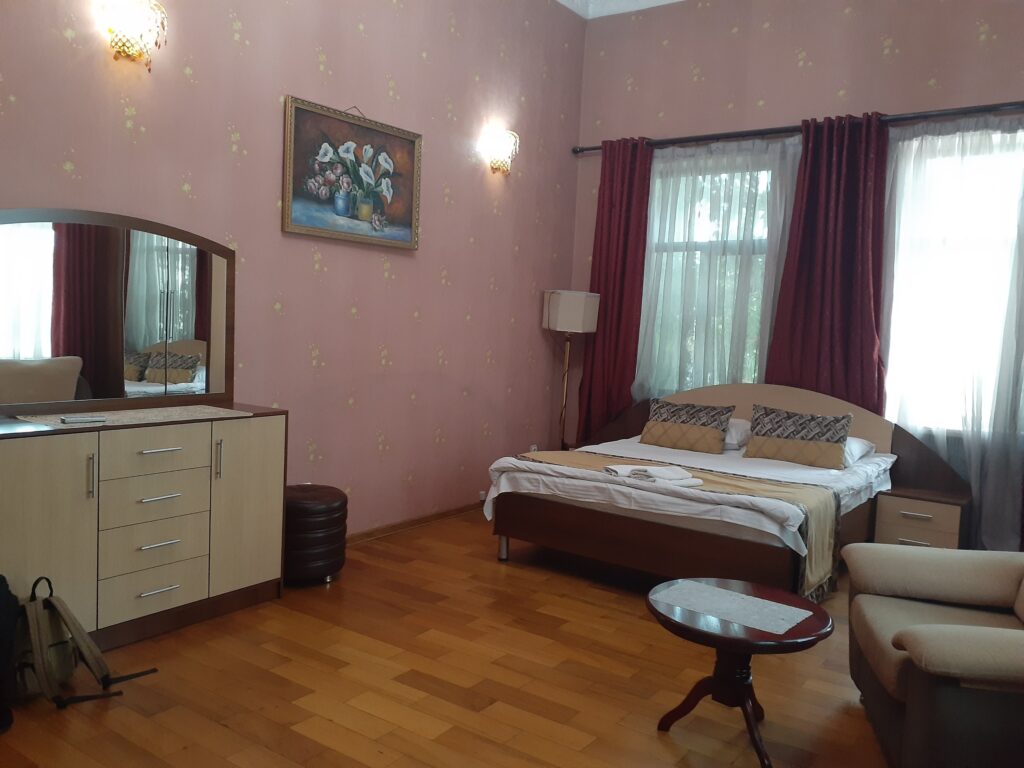
The room we were given was not that kitschy, which was a bit of a relief. On the contrary, the room was much nicer than I expected and we were very happy with it. A more detailed hotel review can be found on Google Maps.
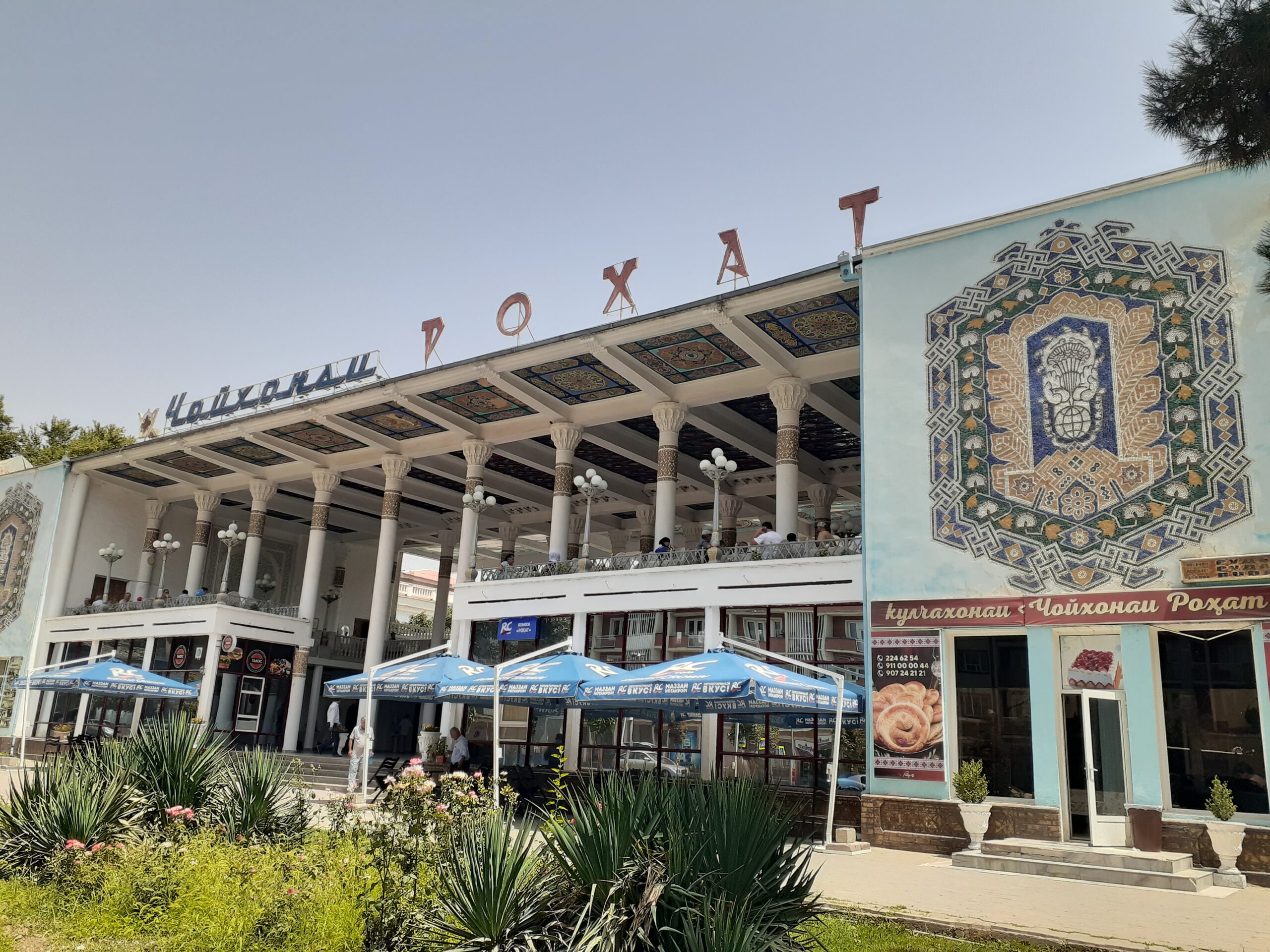


Comment